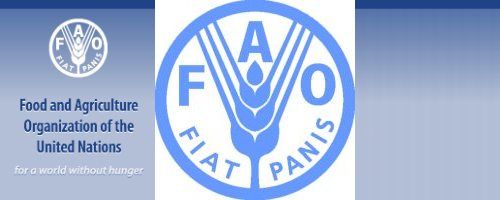New fund for livestock biodiversity management at FAO
New fund for livestock biodiversity management at FAO
Will offer grants to developing countries
 Rome – Germany, Norway and Switzerland have contributed a first donation of $1,000,000 to a new, FAO-managed fund designed to help developing countries conserve and sustainably use their livestock breeds.
Rome – Germany, Norway and Switzerland have contributed a first donation of $1,000,000 to a new, FAO-managed fund designed to help developing countries conserve and sustainably use their livestock breeds.
The fund will provide financing for individual projects submitted by countries in support of the internationally-agreed Global Plan of Action for Animal Genetic Resources. The plan, adopted by all FAO member countries in 2007, has become a key instrument for the conservation and sustainable use of animal genetic resources at global, regional and national level.
Innovative selection process
Any developing country may put forward projects for financing by the fund, which is due to become operational in September. “The money will be disbursed on the basis of letters of agreement between applicant countries and FAO, following an innovative, transparent and impartial selection process led by FAO’s Commission on Genetic Resources for Food and Agriculture,” says Linda Collette, the Secretary of the Commission.
Some 21 percent of the world’s more than 8000 livestock breeds are classified as at risk of extinction. But since the Global Plan of Action went into force, countries’ reporting on breeds’ population status is improving and points to a slowing of the reported rate of extinction.
Major achievement
“The adoption of the Global Plan of Action for Animal Genetic Resources, the first internationally agreed framework for the management of livestock diversity, was a major achievement – a milestone for the livestock sector and for the management of agricultural biodiversity,” says Irene Hoffmann, Chief of FAO’s Animal Genetic Resources Branch. “Since 2007, it has become a key instrument for the conservation and sustainable use of animal genetic resources at global, regional and national levels and created important momentum in many countries.”
Countries demonstrated their interest in the Global Plan of Action by translating it into 9 languages serving around 20 countries – and it is currently being translated into another 12 languages. This will increase awareness of sustainable management of animal genetic resources among stakeholders.
Countries are taking important steps in its implementation, although at different speeds and with different priorities. While developing countries aim to strengthen linkages between genetic diversity, livelihoods and food security, several developed countries highlight the links between genetic diversity and landscapes, and focus their activities on development, labelling and marketing of high-value products.
Livestock policies
Several countries are currently revising their livestock or breeding policies and strategies. 16 countries have so far endorsed national strategies for improved animal genetic resources management, and according to informal surveys, 22 more national strategies are in process of development and 15 more are planned. Regional organizations, for example AU-IBAR in Africa, have included use and conservation of genetic resources in their newly developed strategic plans. Such concerted efforts are bearing results already.
A wide portfolio of animal genetic resources is crucial to adapting and developing agricultural production systems to meet the challenges of climate change and growing world population. Other contributions to the fund will be needed from different sources, including from the private sector.
###
> UN Food and Agriculture Organization (FAO).
The Food and Agriculture Organization of the United Nations (FAO) is an intergovernmental organization and has 191 Member Nations, two associate members and one member organization, the European Union. Achieving food security for all is at the heart of FAO’s efforts – to make sure people have regular access to enough high-quality food to lead active, healthy lives.

FAO’s mandate is to raise levels of nutrition, improve agricultural productivity, better the lives of rural populations and contribute to the growth of the world economy.
The Food and Agriculture Organization of the United Nations (FAO) is working with its Members and the entire international community for achievement of the Millennium Development Goals.
These eight goals – each with specific targets and indicators – are based on the United Nations Millennium Declaration, signed by world leaders in September 2000. They commit the international community to combating poverty, hunger, disease, illiteracy, environmental degradation, and discrimination against women.
![]()
The eight Millennium Development Goals are:
Goal 1: Eradicate extreme poverty and hunger
Goal 2: Achieve universal primary education
Goal 3: Promote gender equality and empower women
Goal 4: Reduce child mortality
Goal 5: Improve maternal health
Goal 6: Combat HIV/AIDS, malaria and other diseases
Goal 7: Ensure environmental sustainability
Goal 8: Develop a Global Partnership for Development
* More information at UN Food and Agriculture Organization (FAO)
###
> United Nations (UN).
 The United Nations was established on 24 October 1945 by 51 countries committed to preserving peace through international cooperation and collective security. Today, nearly every nation in the world belongs to the UN: membership totals 192 countries.
The United Nations was established on 24 October 1945 by 51 countries committed to preserving peace through international cooperation and collective security. Today, nearly every nation in the world belongs to the UN: membership totals 192 countries.
When States become Members of the United Nations, they agree to accept the obligations of the UN Charter, an international treaty that sets out basic principles of international relations. According to the Charter, the UN has four purposes:
- to maintain international peace and security;
- to develop friendly relations among nations;
- to cooperate in solving international problems and in promoting respect for human rights;
- and to be a centre for harmonizing the actions of nations.
###
* The above story is adapted from materials provided by United Nations (UN)
** More information at United Nations (UN)





















